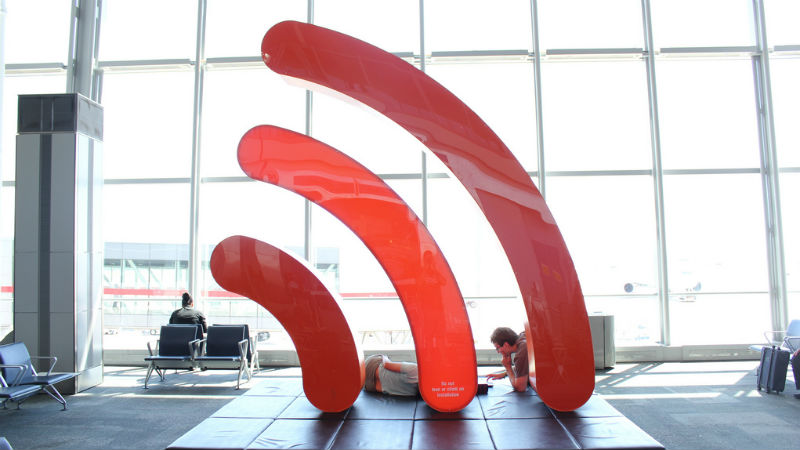We finally know what 'Wi-Fi' stands for - and it's not what you think
You'll never guess

Let me ask you a question: what does the name “Wi-Fi” mean? Considering how omnipresent Wi-Fi connections are, this should be an easy question to answer; especially if you work in the tech industry.
If your answer is “wireless fidelity”, that is actually incorrect despite what you were lead to believe, so keep guessing. Could it be “wireless fiber”? “Wishful firedrake”?
Give up? It’s actually a trick question: the name doesn’t mean anything.
An old 2005 interview with one of the founding members of the Wi-Fi Alliance has been making the rounds again and recounts the origin story of Wi-Fi. According to founding member Phil Belanger, the name was picked from a group of ten names that were created by consultancy firm Interbrand.
The original name for Wi-Fi was “IEEE 802.11b Direct Sequence” and the Alliance knew that name couldn’t be used. They needed something catchier if the standard was going to be widely adopted, so "Wi-Fi" was picked.
Mistakes were made
If you sincerely thought Wi-Fi stood for “wireless fidelity”, blame the Wi-Fi Alliance for that one. Belanger recounts that some of his colleagues felt the need to explain what “Wi-Fi” meant as they apparently couldn’t wrap their minds around the fact the name was just some marketing mumbo-jumbo meant to entice people. This led to the Alliance creating the tagline “The Standard for Wireless Fidelity''.
Belanger admits “this was a mistake and only served to confuse people... ” He called it “a clumsy attempt to come up with two words that matched Wi and Fi.” This mistake was exacerbated when the Alliance printed hats and shirts with the tagline. The tagline was so successful you even had people in the US military calling it “wireless fidelity”.
Get daily insight, inspiration and deals in your inbox
Sign up for breaking news, reviews, opinion, top tech deals, and more.
And if you stop to think about it, that name doesn’t make any sense, either. Fidelity, in a technical sense, refers to how well a device can reproduce a signal. High-fidelity (hi-fi) TVs, for example, can reproduce images that could be mistaken for the real thing. But Wi-Fi doesn’t do that; it’s just a way to connect devices to one another. You’re not reproducing anything.
But why let facts get in the way of a popular misconception? In the nearly two decades since, people have embraced the inaccurate meaning and, if you ask them, would likely argue strenuously that Wi-Fi means “wireless fidelity”. Belanger, though, asks people to do their part and “forget the tagline” and its false meaning.
Wi-Fi accessories
Perhaps it's better to focus less on the meaning of the term, than on what the technology means for us.
Wi-Fi is an integral part of society and it’s hard to imagine life without it. How many times have we asked a friend what's the Wi-Fi password when you go to their house for the first time? And many of us get frustrated when the Wi-Fi suddenly goes out.
If you frequently experience connection drops, we recommend getting Wi-Fi extenders. Also known as boosters, these devices push the signal beyond its normal reach. You should also look into getting a high-quality router to better deal with multiple devices that demand a large portion of bandwidth.
As for the future, multiple companies are hard at work establishing the Wi-Fi 7 standard. Qualcomm even claims its Wi-Fi 7 compatible chip will be able to achieve speeds of 5.8Gbps and sub-2 millisecond latency. And Mediatek promises its Wi-Fi 7 platform will achieve speeds that are 100 times faster than the current UK broadband standard.

Cesar Cadenas has been writing about the tech industry for several years now specializing in consumer electronics, entertainment devices, Windows, and the gaming industry. But he’s also passionate about smartphones, GPUs, and cybersecurity.